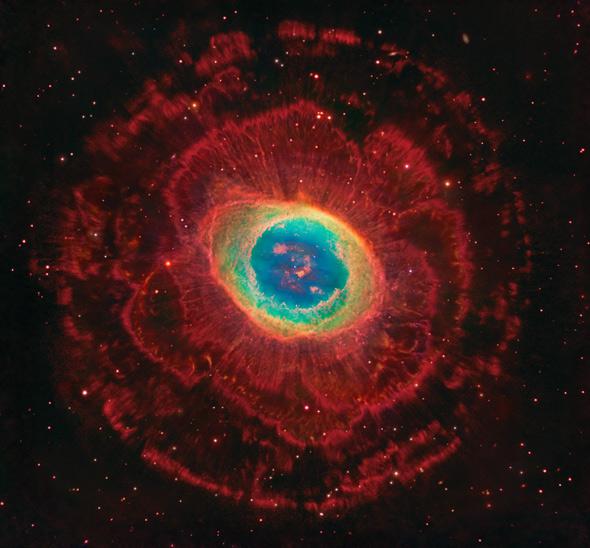Cosmos M57
Of all the planetary nebulae in the sky, none is more celebrated than M57, the Ring Nebula. Lying about 2,400 light years away toward the constellation of Lyra, it’s bright enough to be seen in small telescopes, and when long exposures are taken, quite a lot of detail comes out.
Astrophotographer Rob Gendler knows his way around a digital astronomical image. He has been making a habit of creating incredible photographs using multiple observatories, both in space and on the ground, professional and amateur. He took observations from the Hubble Space Telescope, the Large Binocular Telescope, and the monster 8.2-meter Subaru telescope, and combined them to make a stunning image of the Ring. I literally gasped out loud when I saw this.
The Ring Nebula (also catalogued as Messier 57, M57 and NGC 6720) is a planetary nebula in the northern constellation of Lyra. Such a nebula is formed when a star, during the last stages of its evolution before becoming a white dwarf, expels a vast luminous envelope of ionized gas into the surrounding interstellar space.
